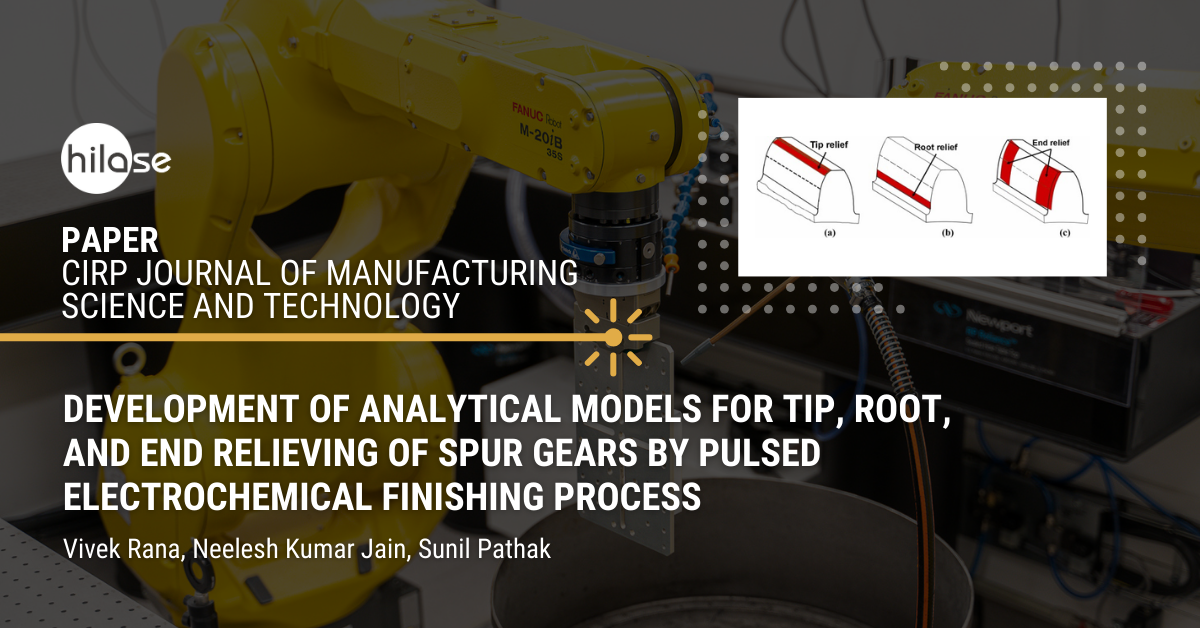HiLASIAN Sunil Pathak from the Laser Shock Peening (LSP) published a new paper in collaboration with Vivek Rana and Neelesh Kumar Jain from the Indian Institute of Technology Indore.
The study titled Development of analytical models for tip, root, and end relieving of spur gears by pulsed electrochemical finishing process can be found in the recent volume of CIRP Journal of Manufacturing Science and Technology.

This paper describes analytical modelling for the non-contact tip, root, and end relieving of spur gears and their associated volumetric material removal rate (MRR) by the pulsed electrochemical finishing (PECF) process. The models were developed using Faraday’s law of electrolysis and involute geometry of spur gears. The developed models are validated experimentally using the innovatively designed and developed cathode gears and experimental apparatus by varying voltage, pulse-on time, and pulse-off time at four levels each. It found that minimum prediction errors for the developed models for the amount of tip, root, and end relief are 0.8%, 0.3%, and 1.3%, respectively, and minimum prediction error for models of volumetric MRR of tip, root, and end relief are 6.9%, 0.6%, and 9.8% respectively. A study of microgeometry along the profile and lead direction of spur gear confirmed that the PECF process not only successfully imparted tip, root, and end relief but also reduced their arithmetical average roughness and maximum height by 61.1% and 62.5% for tip relief, 67.7% and 67.8% for root relief, and 63.8% and 66.6% for end relief respectively. It also removed hob cutter marks and cracks revealed from the comparison of surface morphology of spur gear flank surfaces before and after tip, root, and end relieving. Maximum values of % reductions in maximum height and arithmetical average roughness occurred for pulse-on and pulse-off times as 3 and 4 ms (i.e., 43% duty cycle). The developed models will be very useful in designing or predicting the amount of tip, root, and end relief that can be imparted for a given modification duration. Conversely, they can be used for parametric optimization of the PECF process and to compute the required duration for the PECF process to impart the desired amount of tip/root/end relief to spur gears.








